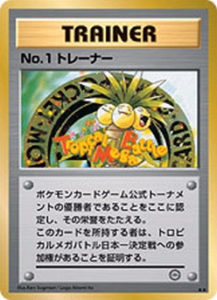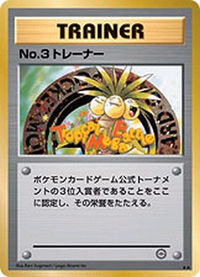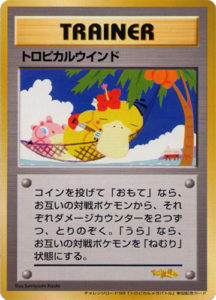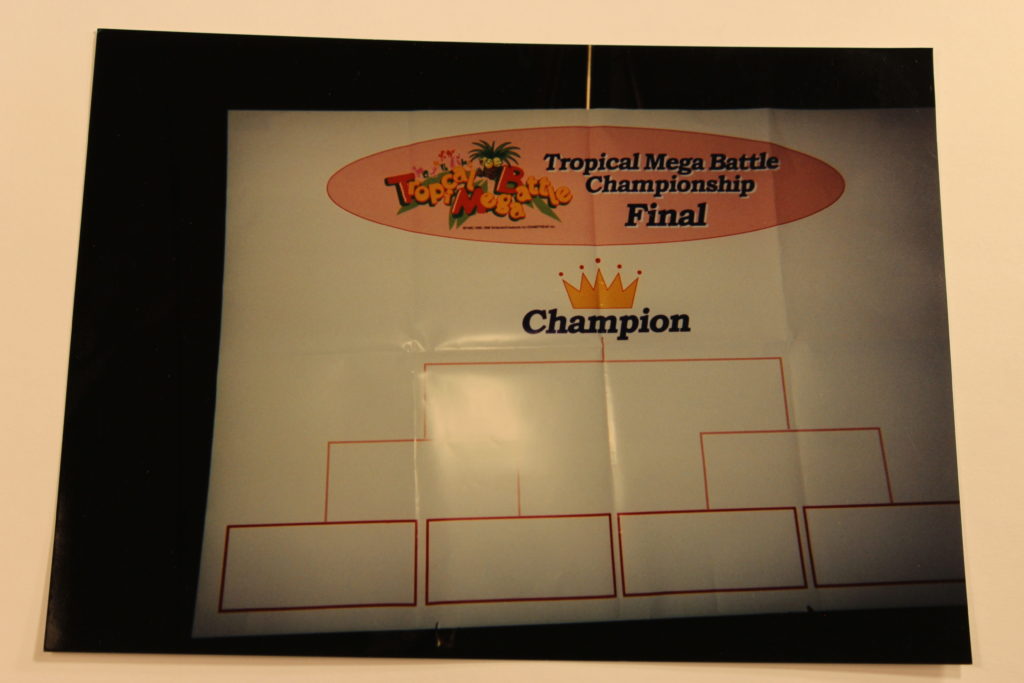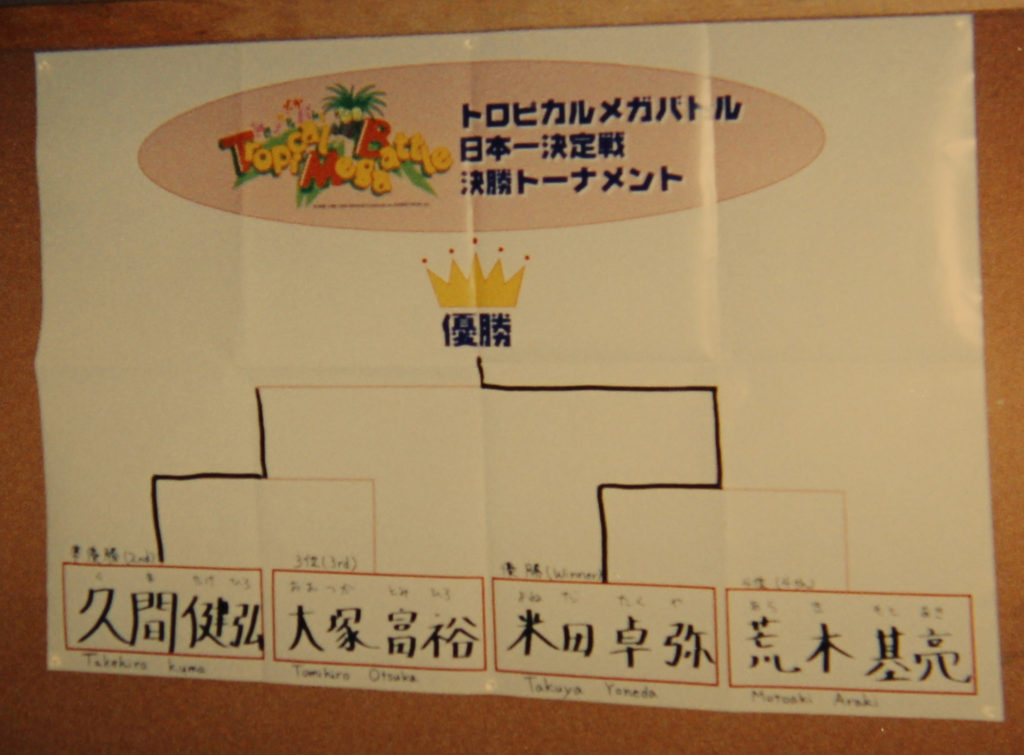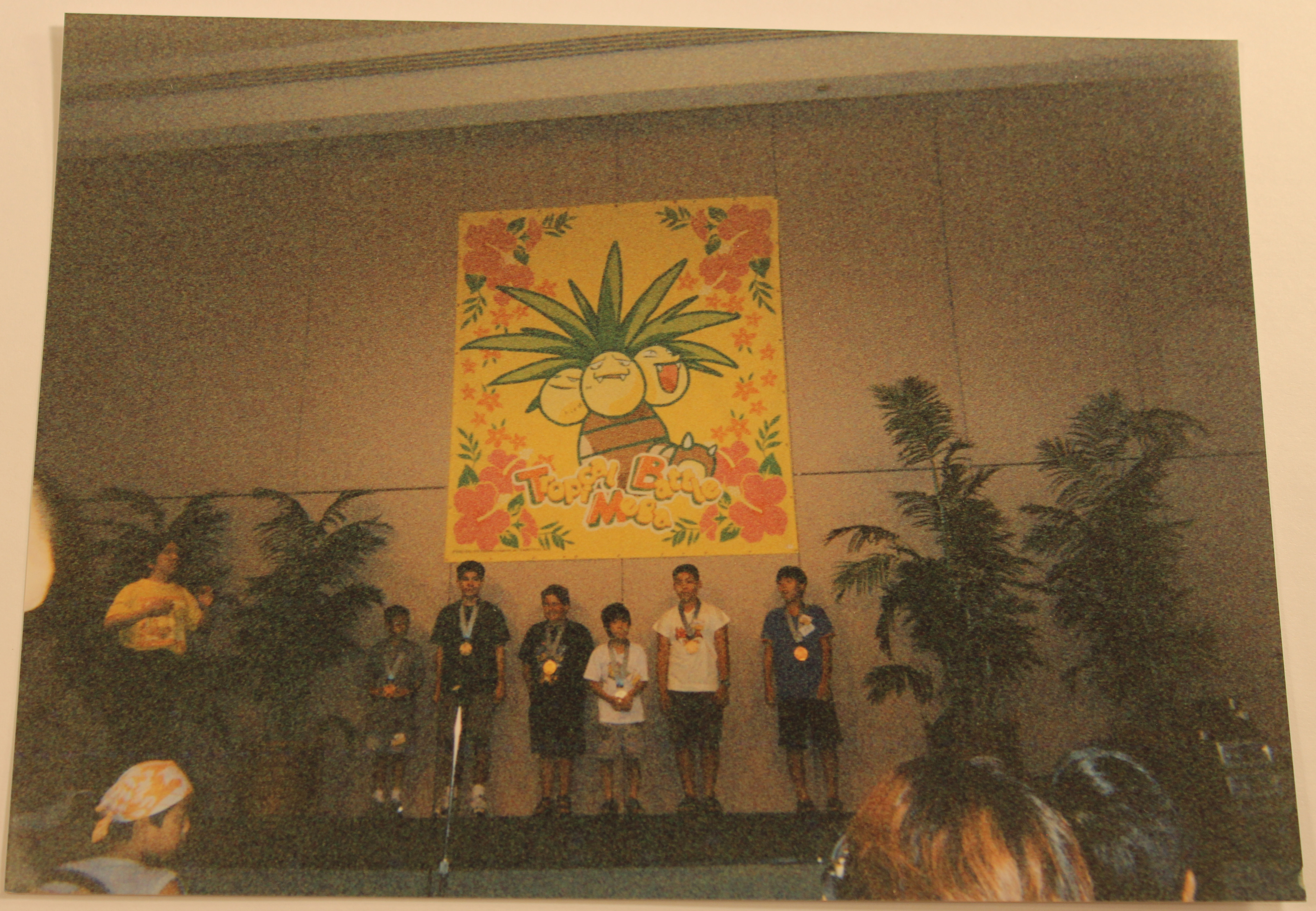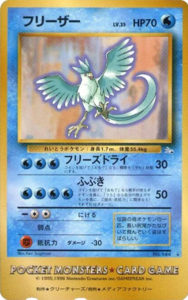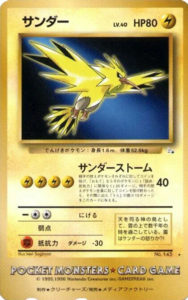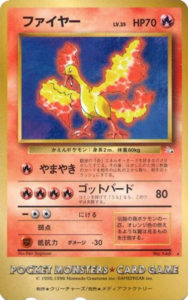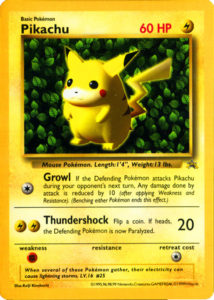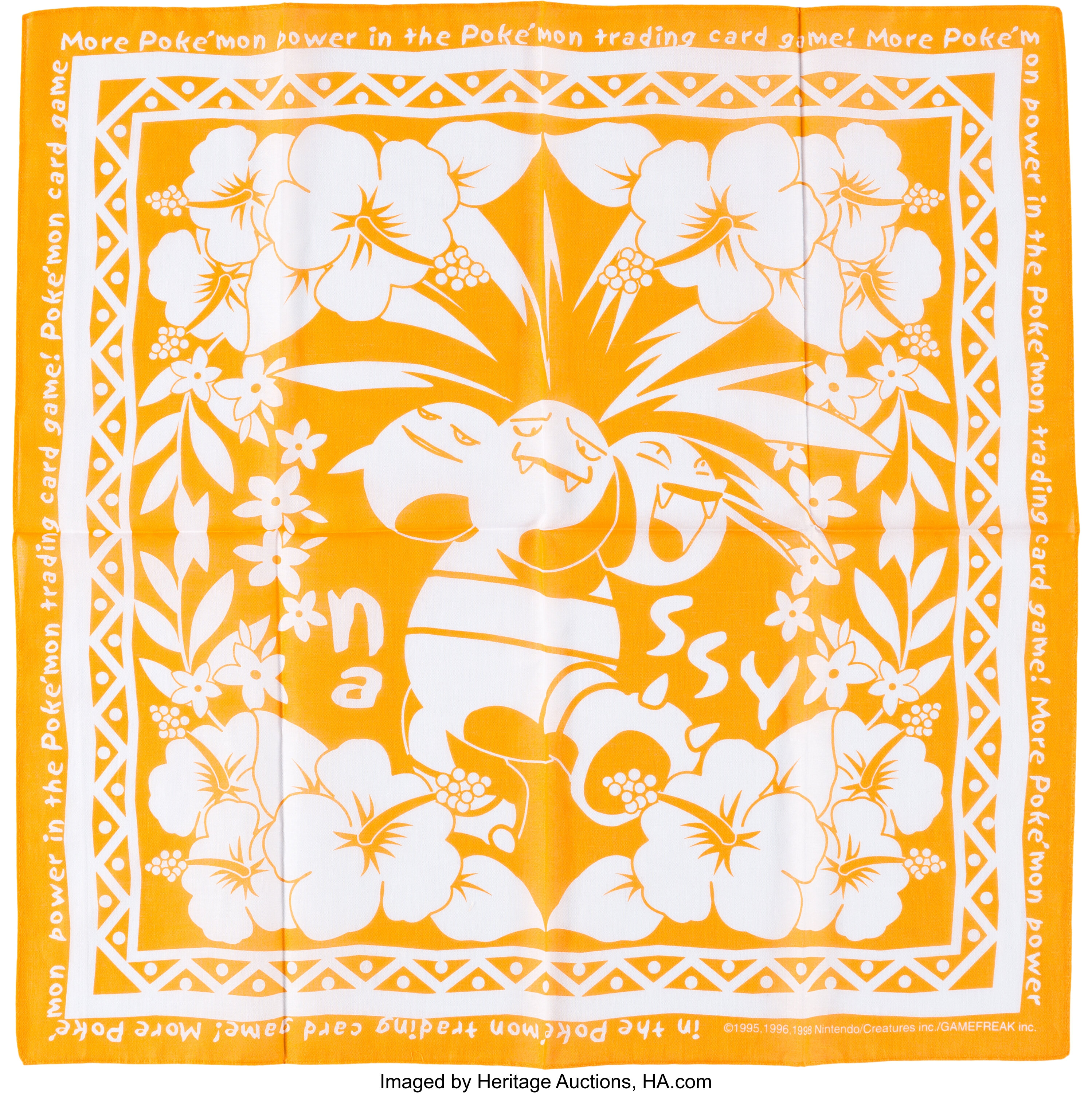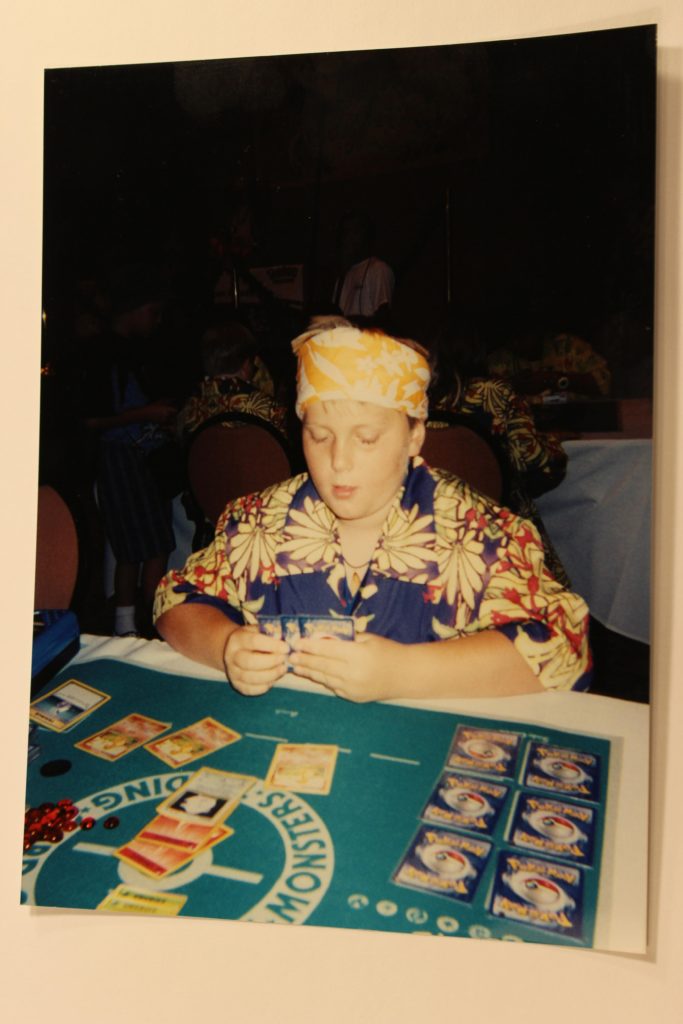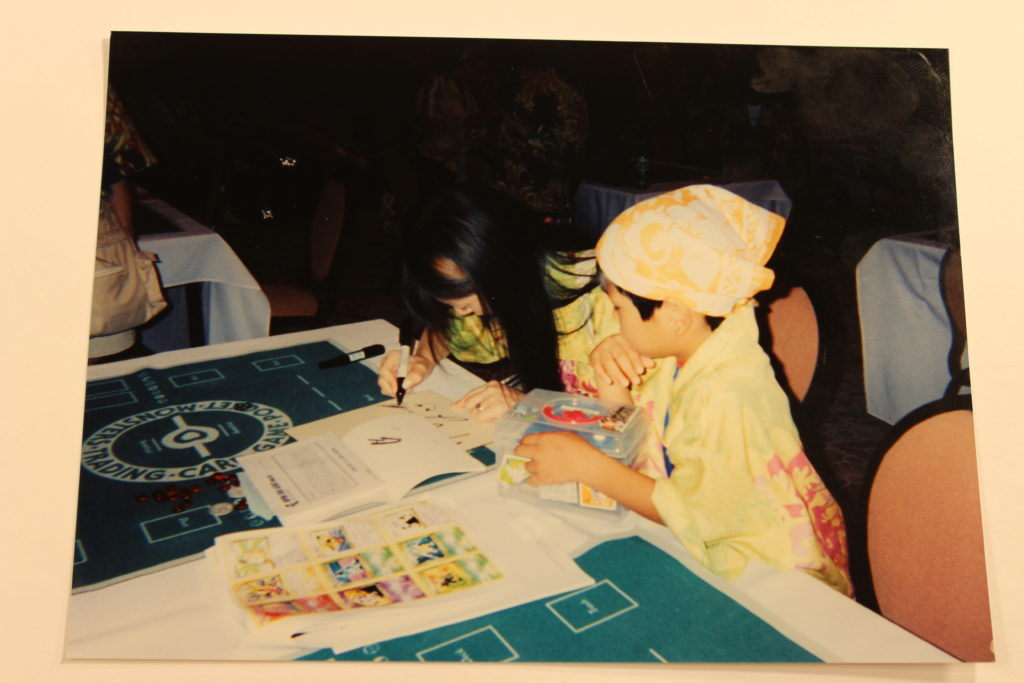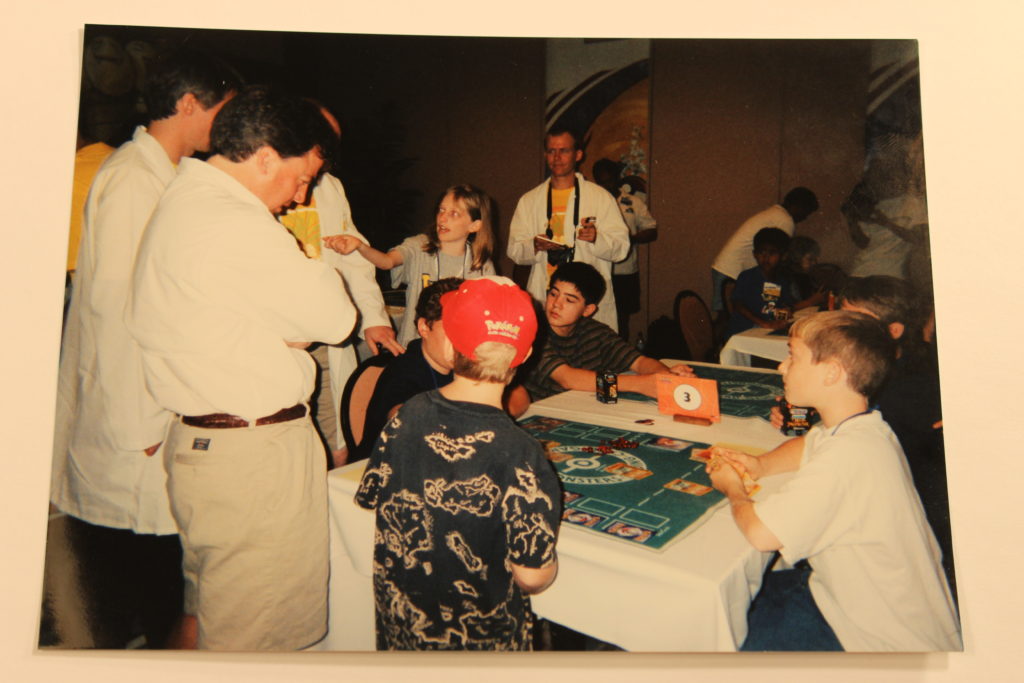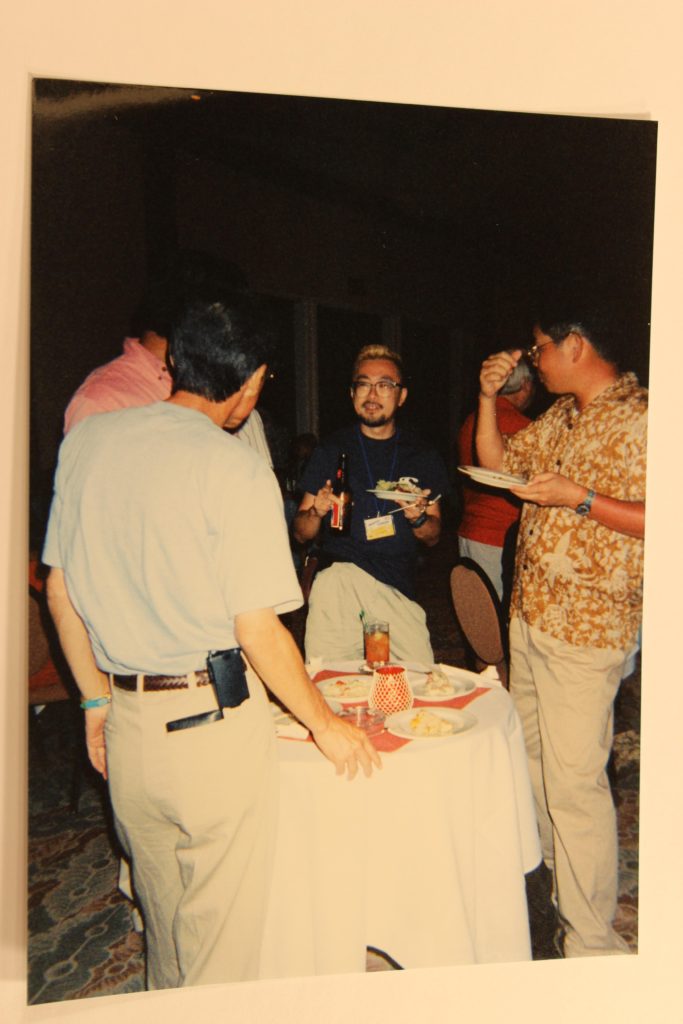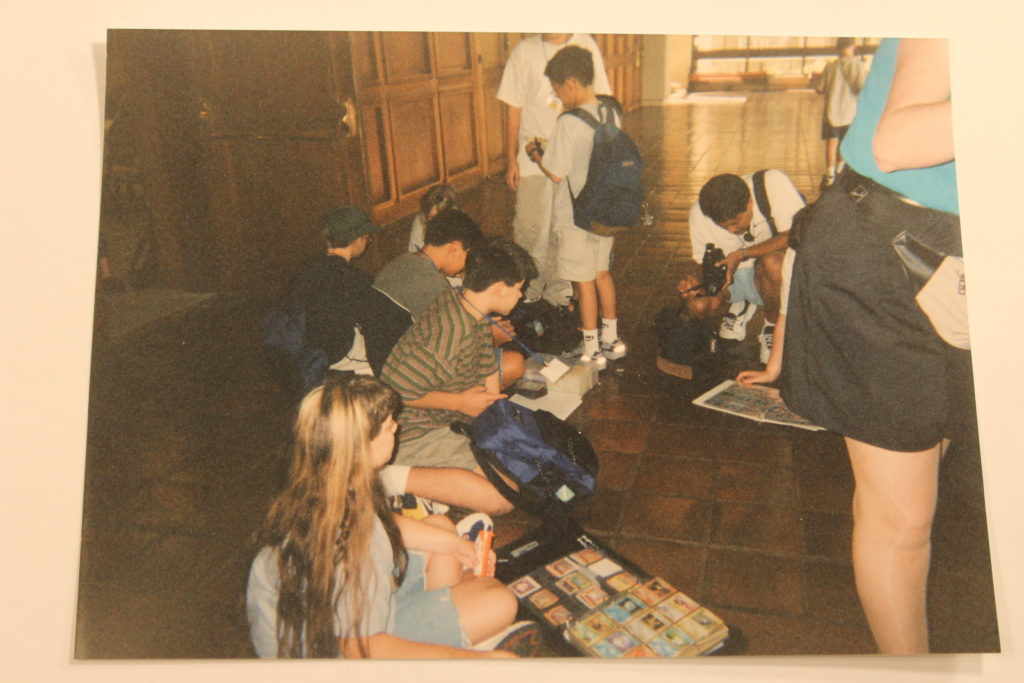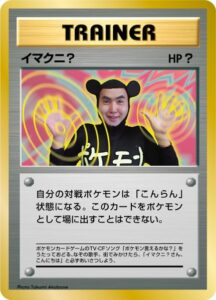The 1999 Tropical Mega Battle (TMB) was the first instance of what would now be considered a world championship for the TCG. It was open to elementary school players (ages 6-12). The finals were held in Hawaii (August 24-27) at the Hilton Hawaiian Village. It was primarily a public relations (PR) event organized by Creatures Inc. Only children from America and Japan were invited to the 1999 event.
Unlike later years, the 1999 international TMB event was also the location of the Japanese juniors division national finals. Future finals tournaments would all occur in Japan for subsequent years. Older players competed in the Secret Super Battle (SSB) , aged elementary school third grade to high school second grade (11th grade). This event was held in a secret location in Tokyo, Japan on August 22, 1999 and was not open to international players.
Japanese Qualifiers (Challenge Road 1999 Summer)
Japanese players qualified for the Japanese national finals by competing in Challenge Road 1999 Summer regional tournaments. The 1st place winners from each regional tournament were invited to compete in Hawaii to claim the “Best in Japan” title. Second and third place winners were not invited to the Hawaii event.
The No.1 trainer card has specific text on it that says:
The Pokémon Card Game Official Tournament’s champion is recognized here, and this honor is praised.
This proves that the person who possesses this card participated in the Tropical Mega Battle Best in Japan Deciding Match.
No.1 Trainer (TMB)
The No.2 and No.3 Trainers don’t have the second sentence that invite the recipient to the event.
The Pokémon Card Game Official Tournament’s runner-up winner is recognized here, and this honor is praised.
No.2 Trainer (TMB)
The Pokémon Card Game Official Tournament’s third place winner is recognized here, and this honor is praised.
No.3 Trainer (TMB)
The first place players would also get to play in the International Tropical Mega Battle (also known as the US-Japan Exchange Battle) with the American players the next day at the same venue.
American Qualifiers
In the USA, the top 12 ranking players in the proper age range of 6-12 in the DCI point system (the American ranking system) received an invite to the Tropical Mega Battle.
1999 International Tropical Mega Battle Event
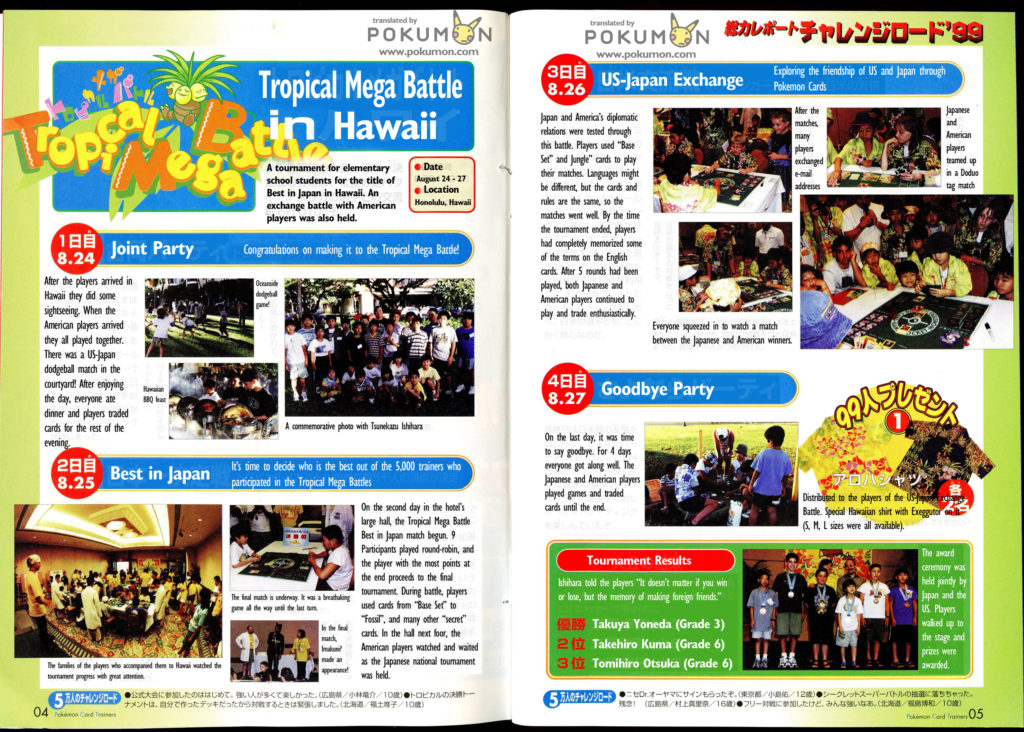
The 1999 Tropical Mega Battle (TMB) was held at the Hilton Hawai’ian Village in Hawai’i. Up on the second floor of the Tapa Tower was where the tournament was held. There were two adjacent rooms set up for the event: a Japanese room, and an American room. Players were allowed to move between the rooms to socialize with each other when events weren’t running.
Attending the event were the following notable people:
- Andrew Finch – Then Wizards of the Coast DCI Tournament Manager, and now Senior Director of Pokemon Play Programs at The Pokemon Company International
- Ron Foster – The translator for Pokemon TCG
- Imakuni? – Famous Japanese Musician, and featured on multiple joke TCG cards and in the Pokemon TCG Gameboy game.
- Peter Adkison – CEO of Wizards of the Coast
- Tsunekazu Ishihara – Founder of Creatures Inc, President of Media Factory, and creator of the Pokemon Trading Card Game.
- Kouichi Ooyama – Game Designer for the Pokemon TCG. He appeared at the event in costume as the character he played in the Pokemon TCG Gameboy game.
- Kagemaru Himeno- Illustrator for numerous early Pokemon TCG set cards
Day 1 – Japanese Best in Japan Finals and International TMB kickoff
Andrew Finch gave a starting speech to competitors in the American room. The Japanese room had a similar announcer. The Japanese room also had air conditioning, commentators, and background music. For some reason the American room did not have these.
In the Japanese room in front of the commentator, 9 Japanese tournament winners competed for the National Championship. These were the 1st place winners from the Japanese Challenge Road Summer events. This event was run in a round-robin style, with the person with the most wins after 5 rounds going onto the finals. The other Japanese and American competitors simply played casual games during this time, or watched the main games.
The Japanese players were allowed to use cards up to the Fossil expansion, as well as some promo cards. 2 out of the 9 Japanese players played Charizard decks, which combined Charizard with Voltorb and Electrode to quickly power up Fire Spin. The majority of the rest of the players ran Haymaker decks featuring Electabuzz, Hitmonchan, Fossil Magmar, and Scyther. The Japanese players also ran trainers like Gust of Wind, PlusPower, and Pokemon Trader. However, they also ran Tropical Wind, which they had obtained in the Challenge Road Events leading up to the TMB. This card was not available to the American competitors.
The American players ran similar Haymaker decks, but some also played Blastoise Raindance decks and Wigglytuff decks. Since Fossil had not yet been released in America, the American players were only able to use Base Set and Jungle expansion cards, meaning that the Japanese players had a distinct advantage in a larger cardpool.
Imakuni was present at the event, and dressed as his character in the Gameboy game. Competitors were able to play against Imakuni to obtain badges. These badges were identical to his badge icon on Imakuni’s Doduo. The deck he played was identical to the strange “Confusion Deck” his character played in the Pokemon TCG Gameboy game.
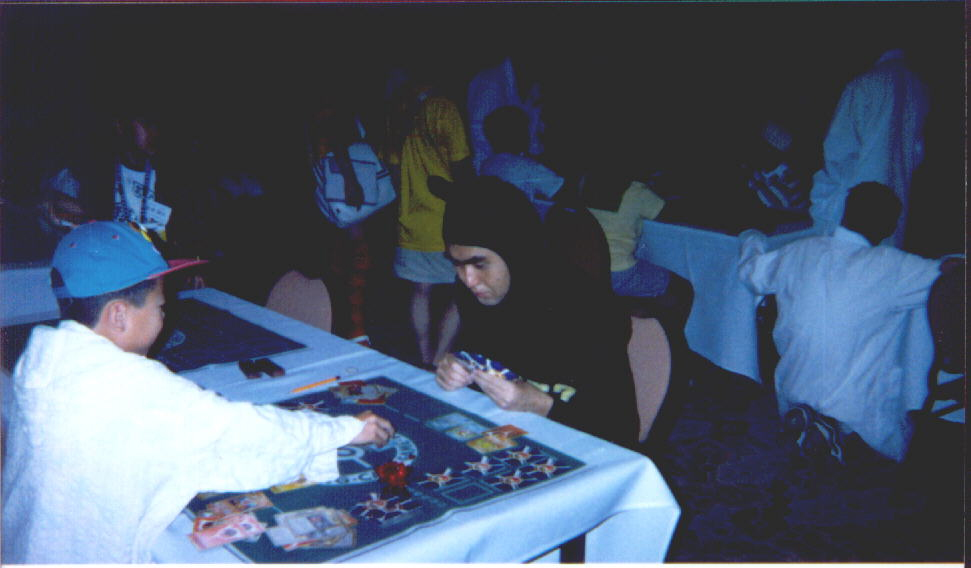
Both American and Japanese players would play to determine a top 3 and final champion for each country. The champions of each country would eventually play each other on the following day’s US-Japan Exchange Battle.
The winner of the Japanese finals was an 8-year-old, while the winner of the American finals was an 11-year-old 3rd grader, Takuya Yoneda. Second and third place were both 6th graders.
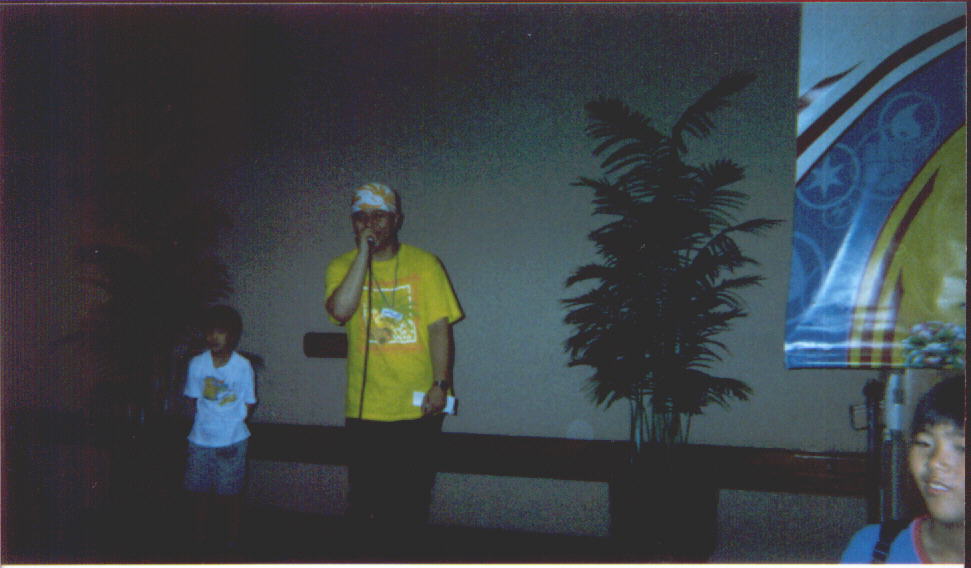
The Japanese national winners were presented with 1st to 3rd place medals. These featured an Exeggutor design, and were similar to the ones presented to the seniors division Secret Super Battle winners.

During the event, all players were given a paper passport with room for 8 stamps. Playing against another person would award a stamp. Filling in all 8 would award a phone card with art of one of the 3 Legendary Birds, and a promotional Pikachu card, which had previously been printed in the CoroCoro Magazine.

It was also at this event that Andrew Finch showed off 11 Base Set Raichu cards that had been mistakenly printed with the Prerelease stamp.
Day 2 – US-Japan Exchange Battle
The day’s ceremony started with some words from Adkinson and Ishihara, with translators for each speaker. Afterwards, a representative for the Hawaiian governor came by to give their thanks to all participants of the event. Adkinson and Ishihara gave the representative a gift basket with one of each of the 7 American theme decks, 3 of each of the 2 currently released American boosters packs, and 2 of each of the 6 currently released Japanese booster packs.
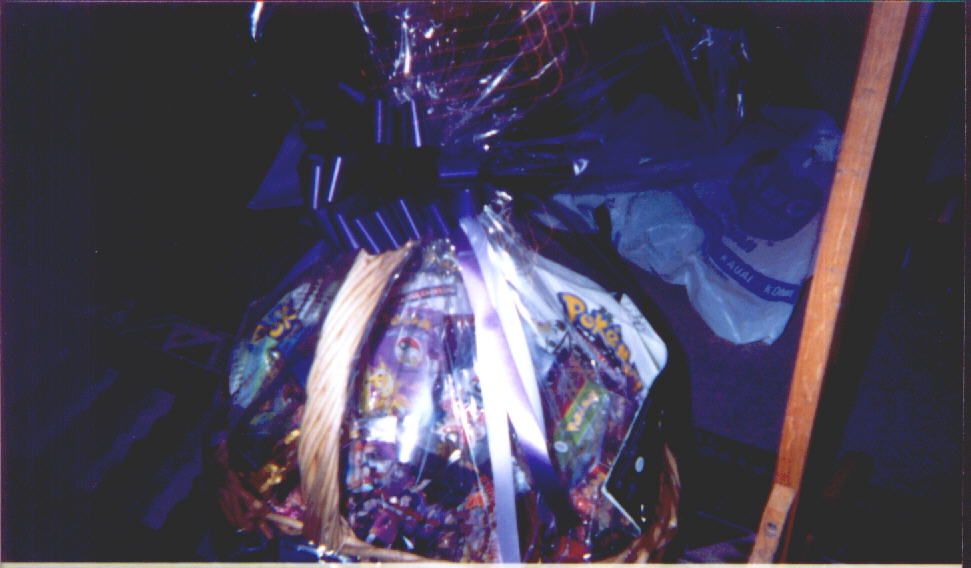
After the opening ceremonies, the tournament began with similar activities to the previous day. All participants received a special bilingual Exeggutor card. This card would be later reprinted as a magazine promo. The reprinted version is almost identical, except it has a glossy surface instead of a matte one. The matte one is therefore exceedingly more rare than its glossy version, as it was only given to TMB participants.
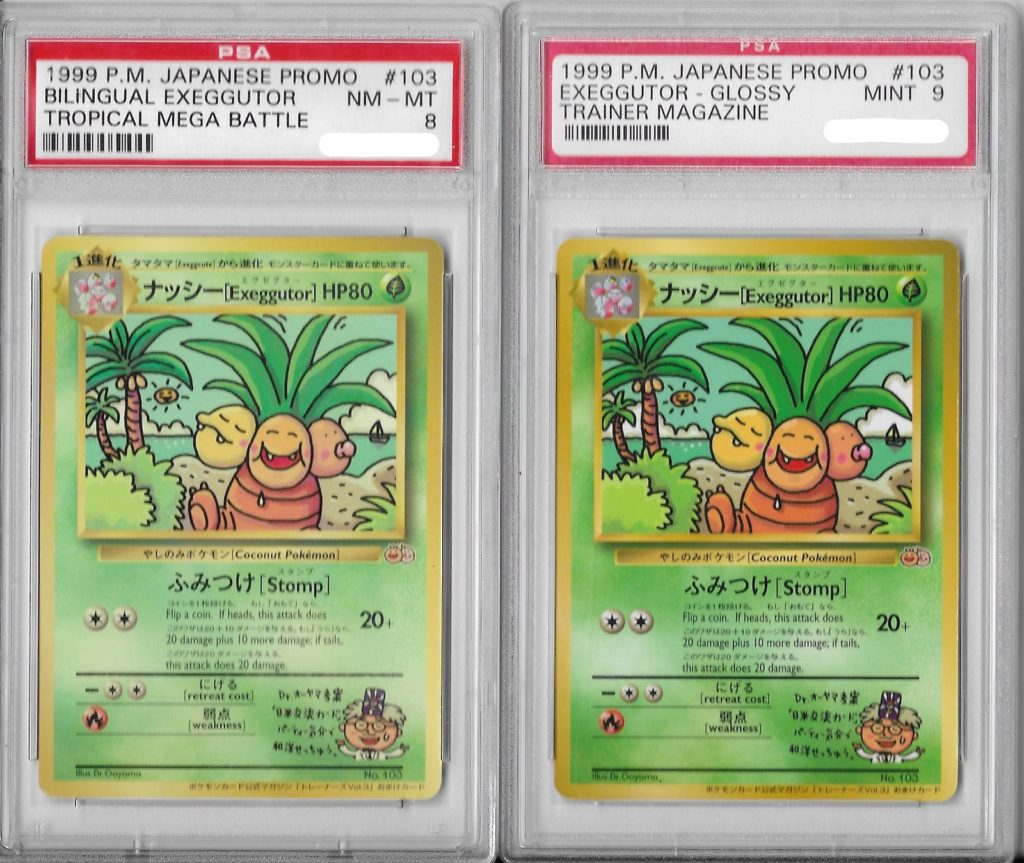

There is one small difference other than the card texture, which is the graphic of Dr. Ooyama. Thanks to the keen eye of thepokecoder, we can see that Ooyama’s tie extends slightly further on the TMB version when compared to the glossy Trainer’s Magazine Vol.3 one.
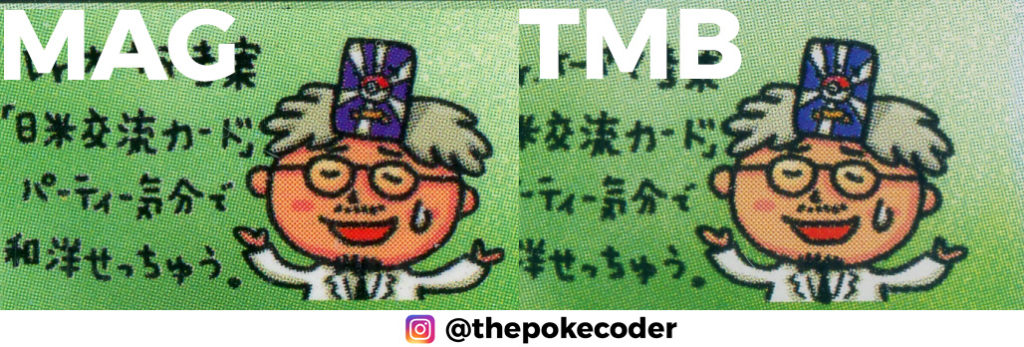
At the end of the tournament, there was a “Grudge Match” featuring the American National Champion and the Japanese National Champion. The match was swiftly decided with the Japanese player’s victory.
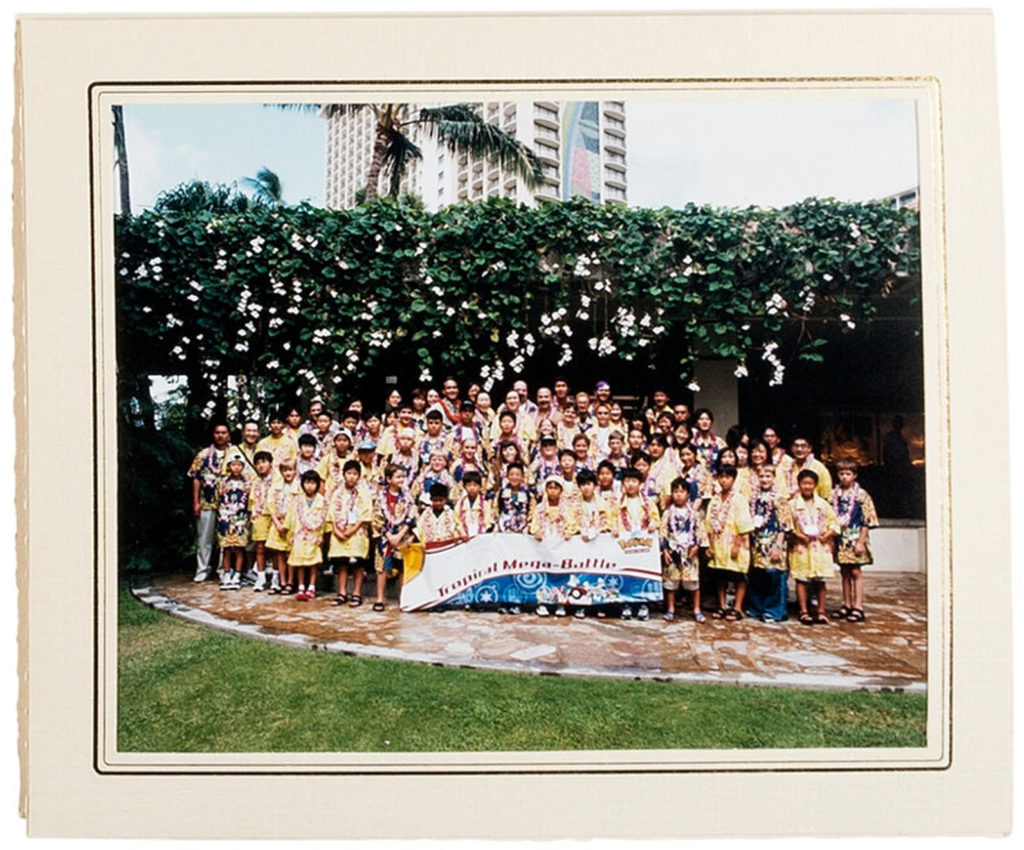
Other Memorabilia


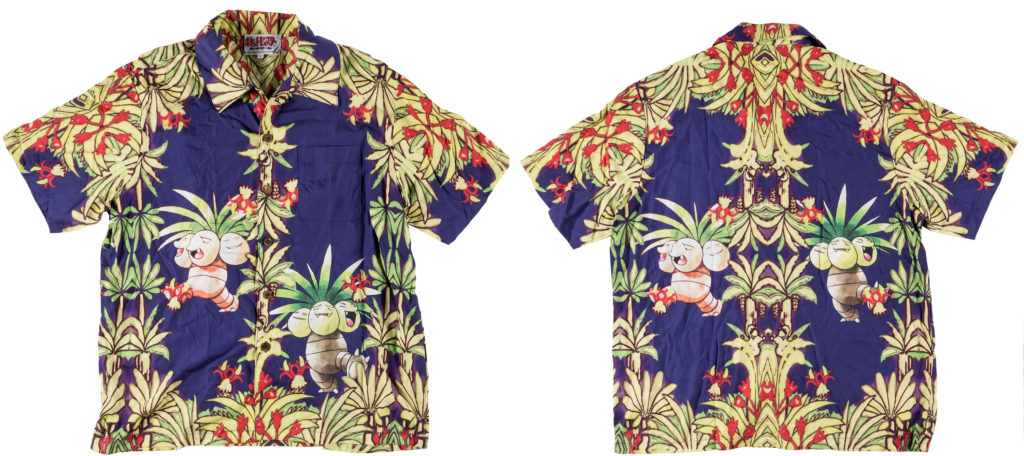
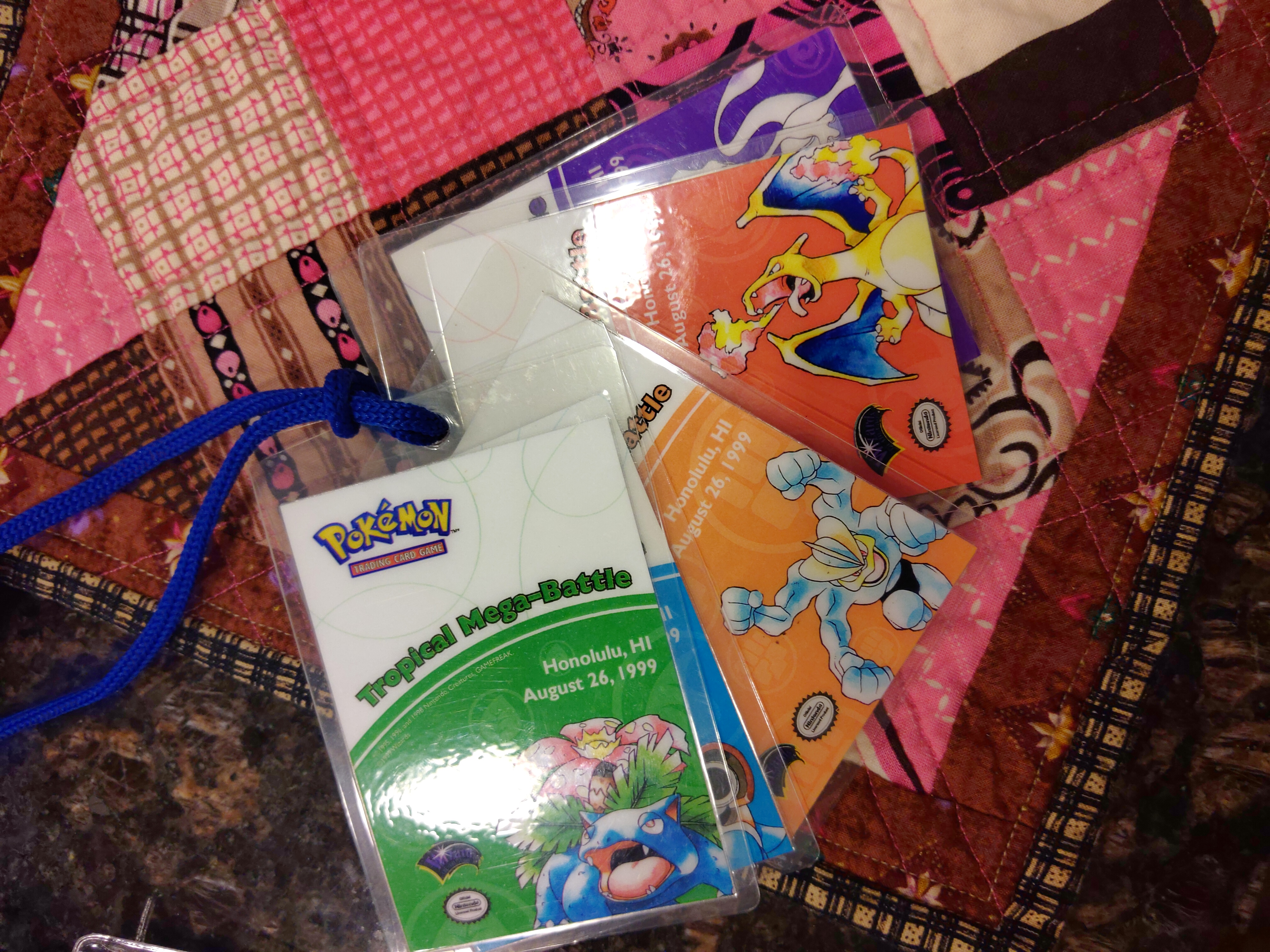
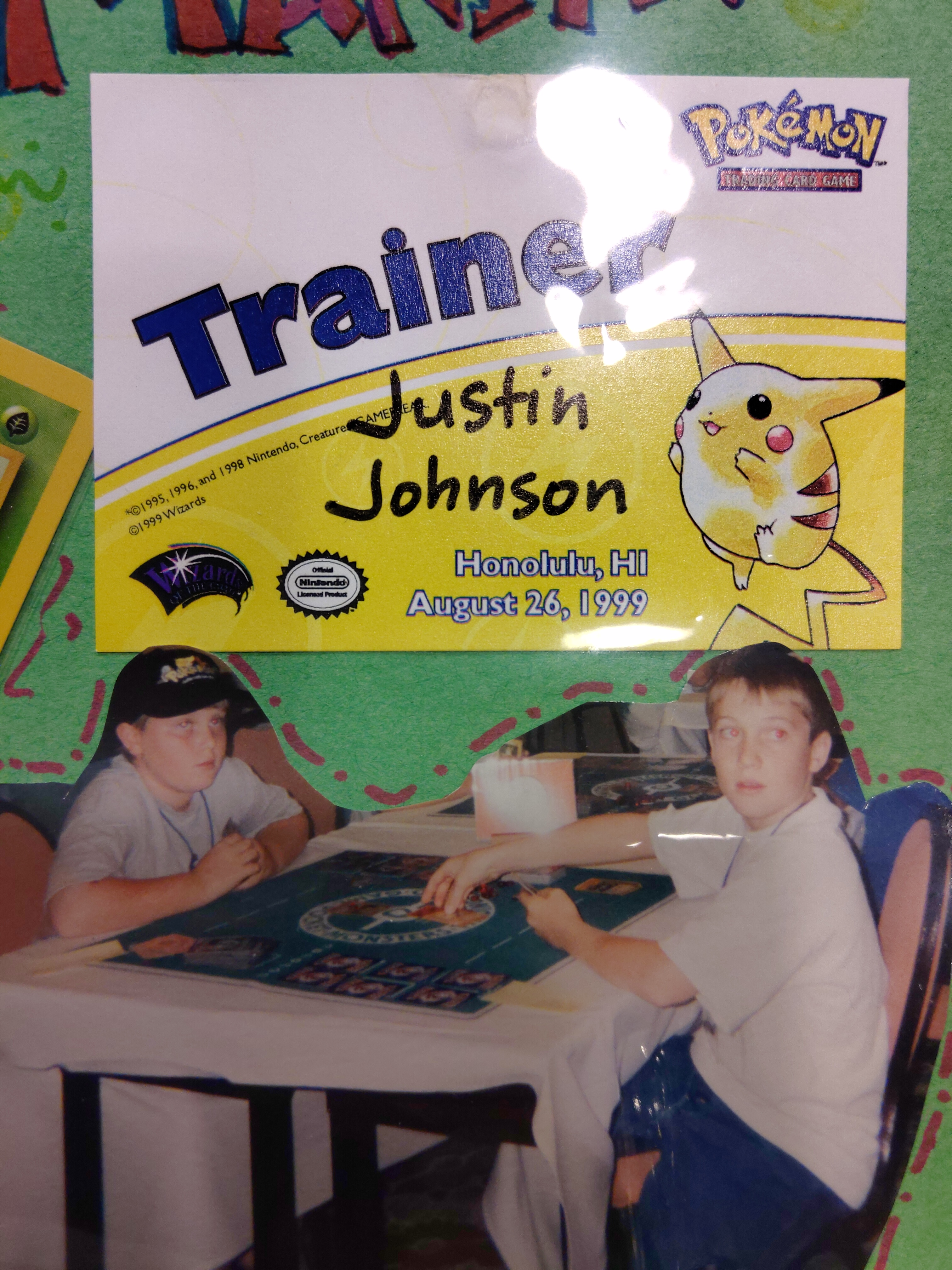
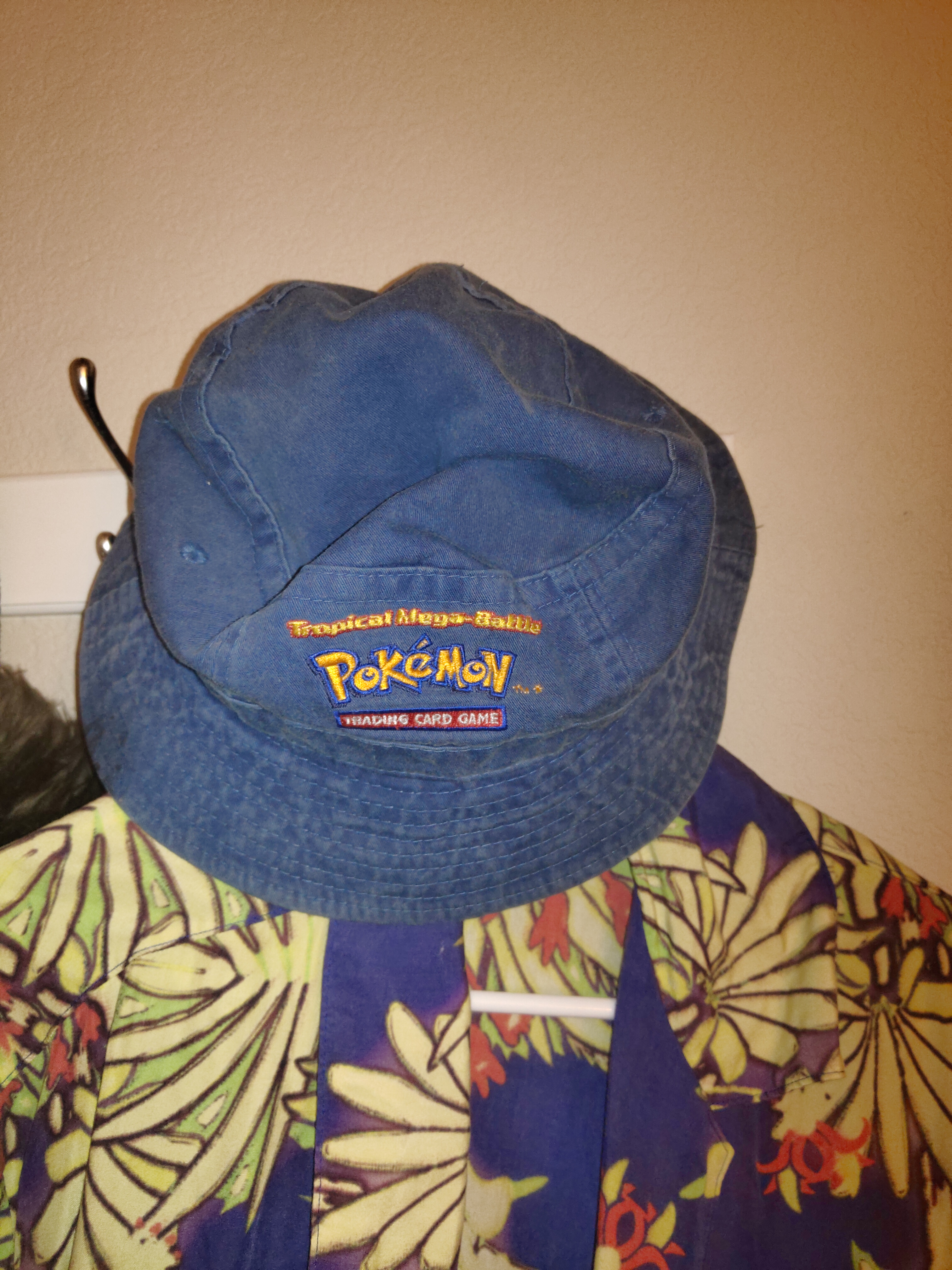
First-hand report: 1999 International Tropical Mega Battle
It took me an hour to ride the bus from Schofield Barracks to Honolulu. Then I had to hop another bus to get the hotel, but I overshot it by about three blocks, so I had to get off and walk, and with the help of one friendly gardener and one friendly police officer, I eventually found my way to the hotel. Sigh. Not a good start.
The Tropical Mega Battle (TMB) was held at the Hilton Hawai’ian Village [here] in Hawai’i. It’s a hotel (of course), but has several shops and such around, so it’s called a “village”. Up on the second floor of the Tapa Tower was the tournament.
In true tournament fashion (through my experience with every Magic: The Gathering pre-release tournament I’ve been at), it didn’t start on time, at 0900 hours. This was a good thing, as I was a bit late.
There were two adjacent rooms set up for the event–the Japanese room and the American room (and for the remainder of this day, I shall refer to them by such).
Since the tournament hadn’t started as of yet, the American children were trading cards between themselves outside of the American room. The Japanese children were inside the room, trading. After I took a few pictures, the American children were called in to their room to start.
Andrew Finch got up and gave his starting speech, pointing out the people that would be walking around to give rulings. It was also prudent to ask about a ruling as soon as possible, because if the players waited to ask, it would be harder to modify the game if the players didn’t know about a ruling.
In the Japanese room, they had a similar announcer, but since he spoke his Japanese rather quickly, I couldn’t make out a single thing that he was saying. I assume that it was like Mr. Finch’s speech.
Then both rooms’ tournaments started.
I found the Japanese room to be a bit superior to the American room, since it had A/C for one, the announcer gave commentary, and they had background music! Unfortunately, the American room had none of these.
At the rear of the Japanese room (in front of the announcer), eight Japanese tournament winners were fighting for the National Championship. The other Japanese children were simply invited to the event to play (and they played in their own “minor” games). The main contenders played in a round-robin style, with the most wins going on to the final portion of the tournament.
Some children were barely even five years old! There was one darling little girl who was playing, and looked so precious playing with her Myuutsuu [Mewtwos]. Unfortunately, she was playing against one of the workers from Media Factory and his Nidoran (Male) deck.
A nice little item that I saw many of the children playing with
were gray “Pocket Monster” card sleeves, like many Americans used
the Ultra-Pro sleeves.
I began to see a trend in the Japanese championship decks. Most of the eight (not all of them) had the “Big Three” of speed; this included Erebuu [Electabuzz], Ebiwaraa [Hitmonchan], Sutoraiku [Scyther], and also used the Fossil Buubaa [Magmar]. Many of them also played with a Tropical card that had the effect of: “Flip a coin. If heads, remove 2 damage counters from each player’s Active Pokemon. If tails, each player’s Active Pokemon is now Asleep.” Some more cards that they used were Gust of Wind, Pokemon Trader, and PlusPower.
Only two players were using Rizaadon [Charizard]. I attribute this to some of the other players that were packing Metamon [Ditto]. Those same Rizaadon players also used the Basic Set Biriridama [Voltorb]/Marumain [Electrode] to pump up their Rizaadons quickly for Fire Spin.
The Japanese players could only use cards up to, and including Fossil.
Some of the American decks had some of the same constants, such as Electabuzz, Hitmonchan, and Scyther. Some deck archetypes that I saw were Water Colorless, Fighting Raindance, and pure Colorless, which was a Wigglytuff deck.
While I was in the Japanese room, a lady from Osaka began talking to me (she spoke very good English), asking if I was a newspaper reporter. I said no, and that I was simply writing an article for the Internet. It turns out that her son was one of the top eight players for the Nationals. It also turns out the Japanese Nationals were for ages six through twelve, just like the American one.
After a while in the Japanese room, a man in a costume walked into the room. At first, I thought it was Professor Oak, but he had a large card stuck to his forehead. It wasn’t Oak, but rather Doctor Ooyama from Pokemon Card GB! He talked for a bit (I couldn’t understand a word), and announced the start of the next round. He then walked around and played the non-tournament players.
After that round ended, there was ANOTHER costumed gentleman that entered the room, and I was happily surprised. He was dressed in a black costume, with mouse-like ears, with yellow lettering across his chest. Yep, it was Imakuni?. After handing out some badges with his face on them to the eight contenders (some of the badges were stored in the crotch of his costume), he announced the start of the next round.
I asked the lady that I was talking with before if that was the REAL Imakuni?, and she answered in the affirmative. He vanished through a door in the back, and I thought he was gone for good, but he came back and started playing the other children in the tournament with his costume still on. If you played against him, he gave you a badge with his face on it. The badge with his face is the picture in the lower-right portion of the Imakuni?’s Doodoo [Doduo] card.
Yes, he played a weird deck, and yes, he used the Imakuni? promotional Trainer card (the one that confuses your own Active Pokemon). I found out that the deck that he was playing was called a “Confusion Deck”, which he used Evil Okorizaru [Primeape] in. I don’t think that he ever won that day.
After playing for a bit, Imakuni? went to the American room and started walking around (which was in-between rounds). He got some REALLY weird looks from the Americans, so someone had to explain to them who/what he is. He’s a singer, of course, and very popular in Japan. He wears the strange costume because he’s trying to evolve into a Pokemon. While he was on the America stage, he sang the first two verses plus the chorus of “Pokemon Ierukana?” [“Can you name the Pokemon?”], a song that he sings on the Pokemon Best Collection CD (track 6), which is the ORIGINAL “PokeRap”. Then he went outside for a bunch of pictures. That guy is a RIOT to watch. In each of the pictures, he did a different pose, such as crying, strutting, or trying to act “sexy”. He also posed with various Americans that wanted his picture. He then went back into the Japanese room to play a few more games.
Then the whole tournament went to lunch, but Imakuni? was still playing a game. At the end, I asked (in my meager Japanese) if I could get my Imakuni?’s Doodoo [Doduo] signed, and after he got a better marker, signed it. The two Japanese children that were in the room hadn’t seen the card before, since it was so rare. I was EXTREMELY happy.
After lunch, everyone came back, and the tournament continued. The Japanese and American sections advanced to the final four. In the very end, a Japanese eight year old won the Japanese Nationals, and a ten or eleven year old won the American Nationals. After the respective rooms congratulated the third-, second- and first-place winners, the official tournament ended, and there would be an awards ceremony in the ballroom in about two hours.
This doesn’t mean that playing stopped. I went to the American room where the children were playing. They were trying to fill up a paper that they had with eight stamps. If they played against someone, they got a stamp. If they filled it up, they got a special prize.
It’s here that I got to play a man named Ron Foster. I ask if he was one of the translators. His reply? “I’m THE translator.” I played my own grass deck (with Rocket Oddishes, Wigglytuffs, and Rocket Golbats) against his Machisu [Lt. Surge] theme deck. We talked a bunch through the friendly battle, about his translation jobs (he live and works in Japan for a software localization firm; he did the translation for the Playstation game “Breath of Fire 3”). He’s (naturally) fluent in Japanese (living in Japan for eleven years will do that to a person), and married a Japanese woman, who speaks EXCELLENT English. Overall, a very nice guy, Ron is. After playing (I won), other children started playing against him (he randomly picked a Gym Leader theme deck to play), and I chatted with him a bit more.
At the end of these friendly matches, if the children filled up their cards, they got a Japanese Pokemon Phone Card, which had the card text of the one of the Three Legendary Birds from Fossil (it was random which card that they got), but with some alternate art. Plus, they got the Pikachu Promotional card (with Growl). Just as Mr. Finch was finishing up, he handed me one. After I grovelled and repeated “Thank you, thank you…” he told me to get up before I started to embarrass him.
Out in the hall, just as everything was done being cleaned and picked-up from the two respective rooms, one of the guys from Media Factory asked if I was part of Wizards. I said no, and he asked what I thought about the tournament. I replied that it was fun, but meeting Imakuni? made my day. We pointed to my right, and there Imakuni? was, out of costume. I was surprised, shook his and, and explained how I came across knowing about him. He was humored with it.
Andrew Finch came out again, and showed that same guy from Media Factory a special misprint card. “Only eleven exist,” he said. Many know that there was a Clefable that was released that had a special green “Pre-Release” stamp in the lower-right corner of the picture. However, it seems that there were eleven Basic Set Raichus in with the Clefable mix, so they were stamped as well.
Then, they went into a meeting about what they were going to do on the next day, and I went back to the American room, and played a game with Ron’s wife, Reiko, but she using the Two-player set deck, and me the Power Reserve deck. Most of the game was in Japanese (she FORCED me to play it that way), and we had a relatively good time. I got smashed, though, since Bellsprouts and Oddishes have a habit of being weak to her Ponytas and Charmeleons.
I waited around for a long while, and the awards ceremony started in the ballroom. There was a LOT of food (I didn’t have any, since I was wasn’t officially part of the tournament, either player or staff, but I did have a Coke).
In the ceremony, the winners of both the Japanese and American Nationals got large medals to wear (not medals that you would encounter in the Gameboy games, but rather award medals). After a few more pictures, I left.
It was about 10:30 pm when I finally got home.
———-| DAY 02
I didn’t overshoot the Hilton this time, but I was pretty dang sore from carrying my heavy backpack and walking all day long on the previous day.
The tournament switched to the Ballroom (the same one that the awards ceremony was held in). The Japanese and American children would later battle each other.
There were few people in the room (since it was early), but Imakuni? was there (out of costume), playing against some children. I asked if I could play him, and he agreed. I didn’t win, though; I could have won within the first two turns (he ran out of Pokemon on his bench), but I wanted to savor playing the game. I lost by running out of cards; I was helped to that end by using two Oaks and four Bills during the game.
After the game, I shook his hand, then bowed with my head to the table, and “Doomou arigatou gozaimashita, Imakuni?-sama.” In effect, saying, “Thank you very much, Lord Imakuni?.” He, and the two Japanese children that were watching the match, burst out into laughter. I got a picture of him out of costume, and a picture with him.
After a while, the entrance ceremony started, with some words from the CEO of Wizards, Mr. Adkinson, and the President of Media Factory, Mr. Ishihara. Mr. Foster and another Japanese individual translated for the respective speakers.
Then, a representative for the Governor came by, thanking everyone for being in the event, and all in all, commending the children for creating relations and friendships between the members of the two different nations. He handed a signed letter from the governor to both Mr. Ishihara and Mr. Adkinson. The representative was also given a nice gift: a basket with one of each of the seven American starter decks, one of each of the seven Japanese starter decks, three of each of the two American Booster Packs, and two of each of the six Japanese Booster Packs. I wish I would have gotten a present like that.
After a short while, the tournament got under way, with Mr. Foster and his assistant doing translating for rules. I took a few pictures, then made my way around to where some Media Factory staff were trading. I looked at some of Satoshi Taijiri’s (one of the Assistant Playtesters) cards, and traded some of my English cards for four Sakaki’s Nidorans (Female), and three Nidorinas. It turns out that people in Japan want English cards,
just like some of Americans want Japanese cards.
He also had a Team Rocket Myuutsu [Mewtwo] that I wanted to get, but he didn’t see anything else in my trade binder that he wanted. So, I told him that I would bring over my collection binder. He flipped through some of the stuff, but the stuff that he saw in there that we wanted were actually in my trade binder, so I gave him four Squirtles, one Wartortle, and one Jynx for the TR Mewtwo. I explained that my trade wasn’t worth his card, but
he said he would trade anyway. I also traded my English Zapdos for a Team Rocket Sandaa [Zapdos] from the new set. He said that the Team Rocket Zapdos is a rather “hot” card in Japan. I can see why–a Pokemon that can do 100 damage for three Lightning Energy and one Colorless would be pretty good.
Some of the Japanese staff was amazed at the size of my collection (which was a large binder, plus my card box), and when they flipped through my binder, they saw the Rainbow Island/Southern Island packaging that I had in it, and they DOWNRIGHT SHOCKED and began laughing when they saw the price of $12.95 for it. In Japan, the price for those sets are 200 yen, and at about 120 yen to the dollar, it is around $1.66. I
explained that Japanese Pokemon things (not just cards), are VERY expensive in the America, such as the new set being around $7.00 a pack where I live. Satoshi agreed, saying that he buys English Packs in Japan, and they are about 500 yen a pack, whereas the Japanese ones are 291 yen a pack. They also saw my Gameboy Kairyuu [Dragonite], and I said that I bought “Pokemon Card GB”. They laughed and pointed to an individual that was standing around the other side of the table, a man by the name of Takashi. I was amused to know that he was used to inspire the Elec Club Master in “Pokemon Card GB”. Though he doesn’t look anything like the picture in the game. When I heard that, I asked about the Ooyama and Ishihara in the game, and if those characters were real people. They were.
I also showed the Japanese staff the differences between the first and second printing of the Unlimited Basic Set (the older printing doesn’t have a shadow to the right side of the picture frame). Plus, they saw the difference in textures between American hologram cards and non-holograms.
It was a bit difficult to talk with the Japanese staff–they knew about as much English as I did Japanese, so even though it was difficult, we eventually got our points across. Kouichi Ooyama asked if I wanted to play a game, and we started to, but the main tournament ended, and the ceremony started, so we stopped.
Each of the children that participated in the tournament got a picture of everyone that attended the tournament, plus a new promotional card, a Nasshii [Exeggutor]. What was special about that card is that it is in both English AND Japanese! The only attack that it had was Stomp. It had a Japanese Pocket Monsters back on it. Imakuni? assisted in handing out the prizes.
Then there was the “Grudge Match” between the Japanese National
Champion and the American National Champion. Almost everyone was
crowded around it.
It lasted, maybe, seven minutes.
The American Champion ran out of Pokemon on his Bench, and thus lost to Electabuzzes and PlusPowers. I asked Ooyama if Japanese players like to use PlusPowers, and said yes. I said that many Americans don’t use it very much, and he was surprised.
That pretty much dissolved the rest of the tournament.
Imakuni? was in costume to play children again, and I saw another of his game cards. It has the text of the card game (written entirely in his handwriting), but has the back of a regular trading card. Its effect is that when you play it, you make your opponent look the other way, and when he or she does, you remove a damage counter from one of your Pokemon. I also saw a new Masaki [Bill] card. I think it’s called Masaki’s Computer (or something to that effect). It’s in the new Japanese Introductory set. Flip a coin, and if it’s heads, you draw 4 cards.
After a while, I saw Takahashi playing a Grass deck (originally, he was playing a Rokon [Vulpix]/Kyuukon [Ninetails] using Electrodes to pump up the Fireblasts). I said (in Japanese), “Why are you using a Grass deck? Aren’t you the Elec Club Master?” And everyone at the table burst out laughing.
I walked around for a bit more, and encountered Mr. Foster who was playing his theme decks again. He asked me, “Did you get your cards signed?”
“What?” I said.
He showed me an index card with a picture of a Pokemon on it, and a Japanese signature, and pointed to a young lady at the opposite corner of the table where he playing. He explained who it was, and I exclaimed “Ah!” The young lady laughed while she was drawing a picture. Apparently, “generic” artists of card games aren’t as big in Japan as they are in the United States.
She, Himeno Kagemaru, was there. She is one of the illustrators for the Pokemon Card Game, and did such pictures as Jungle Iibui [Eevee], Jungle Purin [Jigglypuff], the Eevee family of Evolutions, and more. She drew some Pokemon on request on index cards. Mostly, people asked her for Eevee and the family of Evolutions. I got my English 1st Edition Jigglypuff and Eevee signed by her. Plus, she drew me a Myuu [Mew]. Ron’s wife, Reiko, was there to help out with translating the requests. I helped with some of the English to Japanese names of the Pokemon. I commented that she made the drawings look so easy, and when Reiko translated for me, Ms. Kagemaru laughed heartily.
When no one was requesting drawings, I asked if she could draw Myutsuu [Mewtwo] (simply to test her skills). In English, she said, “Okay,” and pointed to me, “but we have a competition.” So, I had to draw a very bad Mewtwo, while she drew her perfect Mewtwo. Then she said, “Sign! Trade!” So, she has my Mewtwo and I have her own. I tried to draw a Pikachu, but messed up. She wanted it, and I said, “Nope! You’re not getting this one.” And I balled it up.
After that, she drew a comical picture of herself for me, then drew a comical picture of me. She is quite an excellent artist, and has really only been drawing for five years. I think she may have misunderstood me, and if she can draw like that in only five years, then there’s hope for me. After getting a picture with her, she had to leave. She was quite a nice person. I hope to meet her again.
It wasn’t much more time before everything was ending. I walked around for the final time, and got a red Doduo coin, an Imakuni?’s Doduo coin, two more cards signed by Imakuni? (a Poliwag and a Staryu; two cards he was using in his deck during both days), a card signed by Takahashi (a Voltorb), and a Professor Oak signed by Ron Foster and Reiko. Mr. Foster has a habit of, when people ask him to sign a Professor Oak, crossing out the “Oak” and writing “Ron”, and draws glasses, a beard and a ponytail on the picture.
Sadly, it was time for me to go. After saying goodbye to everyone and hoping to see them all next year, I left.
I got home three hours earlier than I did on the previous night.
What an experience. I was glad that I took the trouble to go all of the way to Honolulu. I made some friends, especially with those at Media Factory, and some within Wizards. They hope to have the Mega Battle next year, but it will be children from, not only the United States and Japan, but from Europe and the rest of Asia as well.
Everyone was so incredibly nice at the tournament, and I’ll have great memories of it for years to come. I hope to be able to attend next year as well.
—————————————————————–
Fin.
Other Event Photos
Many of these are courtesy of Justin Johnson, who participated in the event.
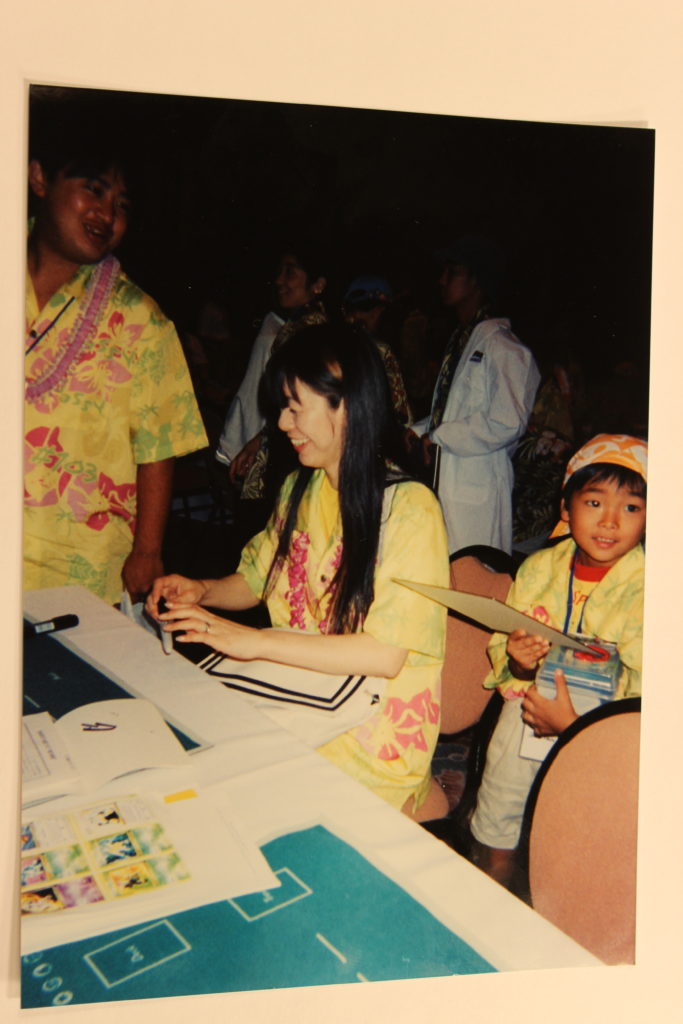
Legacy
The 1999 tournament circuit in Japan and International Tropical Mega Battle set gears in motion for future World Championships. The Tropical Mega Battle would occur again in 2000, 2001, and 2002 before making way for what are now the Pokemon World Championships.
Sources
- http://www.oocities.org/timessquare/alley/2247/Tropic.txt
- https://efour.proboards.com/thread/10272/1999-tropical-battle-bilingual-exeggutor
- http://www.edo-hrzic.com/archive/Tmbpics.htm
- https://farm1.staticflickr.com/845/41263231610_173e0e1edc_o.jpg
- https://imgur.com/gallery/JkvazBN
- Trainers Magazine Vol. 1
- Trainers Magazine Vol. 2



